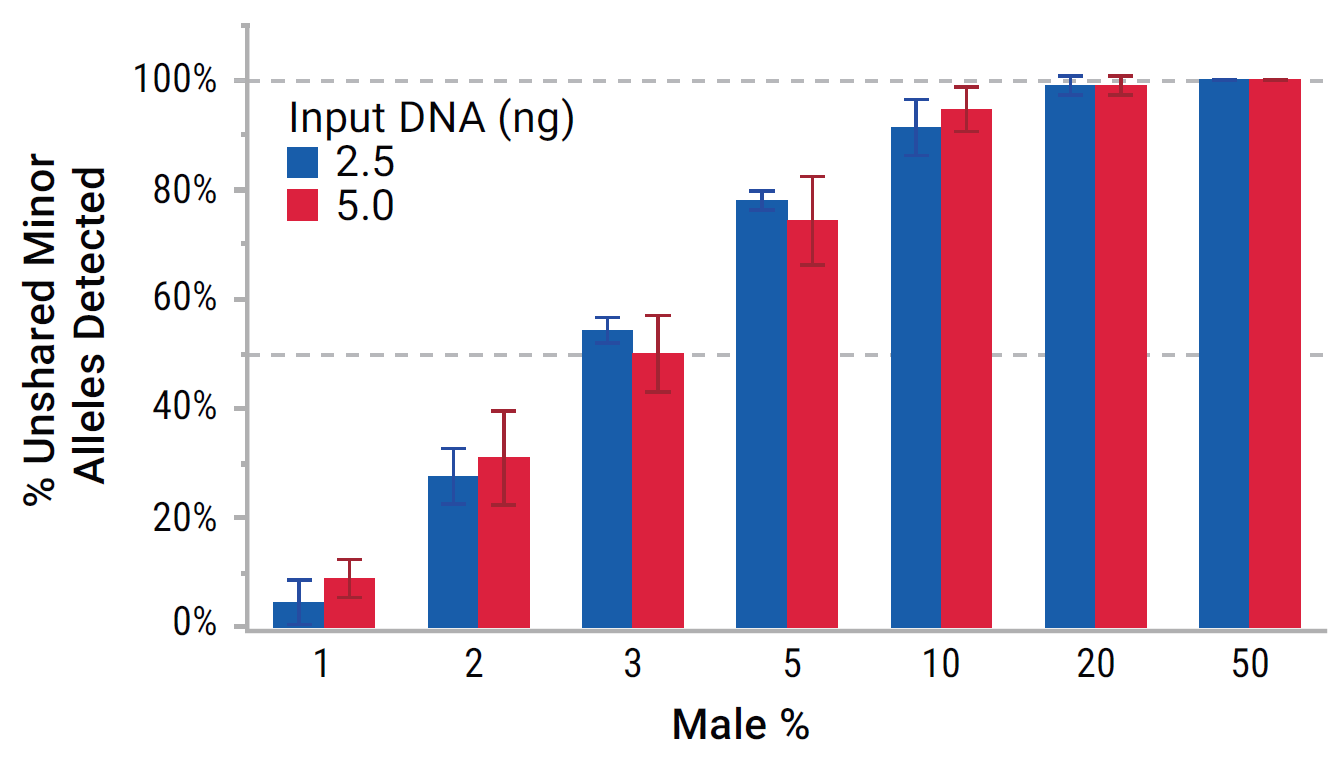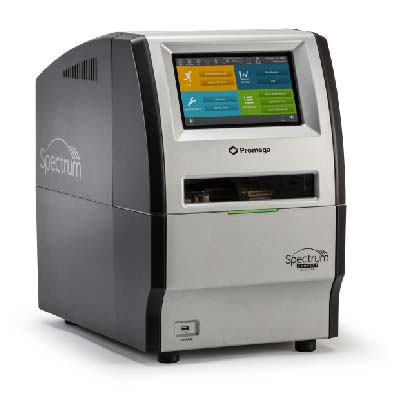February 12, 2021 -- Sample identification and verification is essential to research that interrogates and compares specific regions of the human genome, called short tandem repeats. Benchtop capillary electrophoresis is a sample identification method that can be easily implemented in research labs for many forensic and research applications.
Capillary electrophoresis (CE), in which DNA is extracted from a variety of samples and specific regions of the DNA are examined to develop a unique genetic "fingerprint" for an individual, is a commonly used method for human sample identification. In many cases, the sample may contain a mixture of human and other types of DNA, so it is important to specifically quantitate the amount of human DNA present.
CE is an essential element of many research projects using human cells, tissues, or mixtures, where identification may be required to track and confirm sample origin for databasing, biobanking, or research purposes. For example, archival tumor/normal specimen pairs may be tested to confirm that they are derived from the same individual.
Best practices for research applications
In a typical CE workflow, the next step after sample collection, DNA extraction, and DNA quantitation is to amplify specific regions of the human genome, known as short tandem repeats (STRs) or microsatellites, using polymerase chain reaction (PCR). The amplified products, labeled with fluorescent dyes, are then separated by CE to generate an electropherogram that displays a characteristic pattern of peaks. This pattern can be compared to other DNA profiles, such as those in a DNA database or biobank.
DNA genotyping using STR markers is currently the gold-standard for human sample identification. STR markers consist of short, repetitive sequence elements three to seven base pairs in length that are highly polymorphic and distributed widely throughout the human genome. PCR amplification of multiple STR loci simultaneously, or multiplexing, is possible with different colored fluorescent dyes and different sized PCR products.
Use of multiple loci enables a high power of discrimination in a single test without consuming much DNA (e.g., 1 ng or less of starting material). While this is beneficial for forensic testing, researchers often benefit from STR kits that are optimized for higher DNA input (e.g., 2.5-5 ng), which can improve robust detection of minor genetic contributors by reducing stochastic effects on PCR.
Human mixture analysis with benchtop CE
Human sample identification is a well-known and integral part of forensic and paternity testing. Human identification may also be used as verification of twin zygosity or parentage in research studies to improve reliability of familial information. In its most sensitive application, human identification can be used to detect mixtures in human research samples to rule out external contamination in samples, to identify contamination due to histological procedures, to track chimerism, or to study xenografts, for example.
The introduction of compact, benchtop CE instruments has brought the benefits of sophisticated STR kits and human sample identification to individual research labs. The small footprint and low-to-medium throughput of these systems allows labs to perform their own testing without waiting for sample batching or core lab turnaround. Researchers can control the entire workflow, from amplification and electrophoresis conditions to data analysis, with a potential for faster turnaround to support key research projects.
One study demonstrated these benefits for detecting low-level human contributors in mixed samples. Human mixtures were mimicked by combining purified DNA from one male and one female individual at different ratios down to 1% male: 99% female. Single-source DNA and all mixtures were amplified in triplicate (GenePrint 24 System, Promega), using either 2.5 or 5.0 ng of input DNA and 27 or 26 PCR cycles, respectively.
Amplified samples were denatured and injected with a sizing ladder on the CE system (Spectrum Compact CE System, Promega). Data were analyzed in two ways: using a qualitative approach typical of cell line contamination testing or identification of extraneous tissues in tissue samples and using a semiquantitative analysis commonly used in chimerism determination (ChimerMarker software, SoftGenetics).
Sample mixtures were qualitatively identified by detection of alleles unique to the minor contributor (e.g., male). For one pair of samples, the male DNA introduces 30 unique alleles across the 24 loci amplified with the STR kit. Half of these unique alleles can be detected above the analytical threshold with as little as 3% male DNA in the mixture, demonstrating sensitive detection of a minor contributor.

Looking ahead
Human sample identification and mixed sample analysis with STR genotyping can confirm sample provenance and identify sample contamination or chimerism in many research areas. The results of the benchtop capillary electrophoresis study demonstrate the ability of CE to detect low percentage minor contributors in human mixtures -- one of the most sensitive human sample identification applications -- with the additional benefit of high return on investment, small footprint, and capacity for flexibility in sample batch sizes.
Gabriela Saldanha is a senior product manager in the sample analysis strategic portfolio management at Promega. Gabriela's career spans over 25 years in the laboratory and in product development, strategy and implementation related to nucleic acid amplification technologies, more recently leading the Spectrum Compact CE system launch.
Do you have a unique perspective on your research related to genomics? Contact the editor today to learn more.
Copyright © 2021 scienceboard.net







